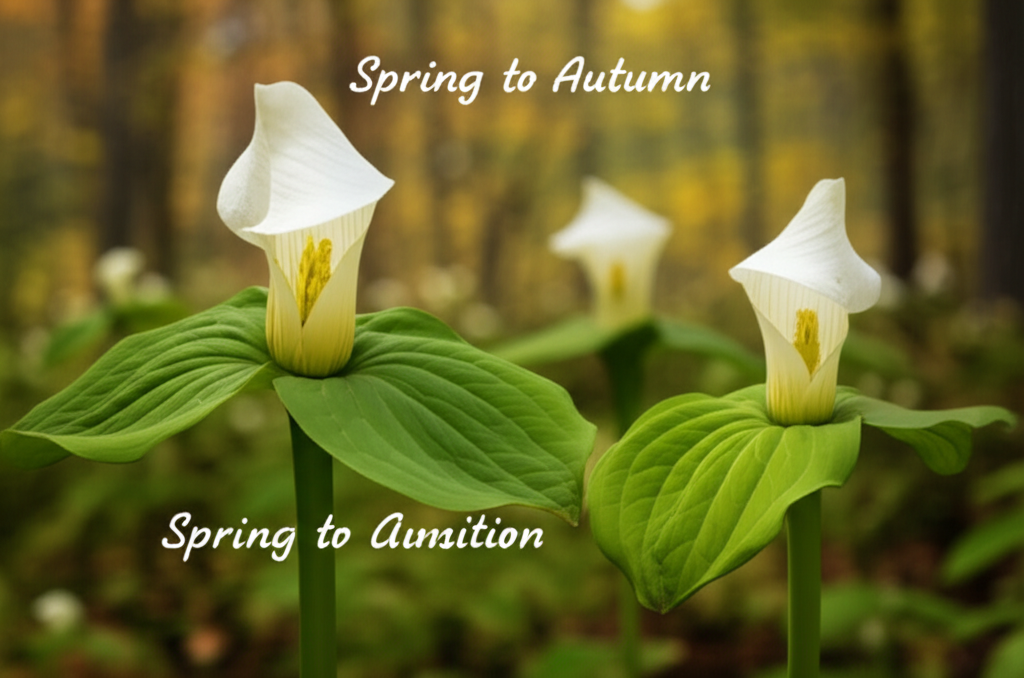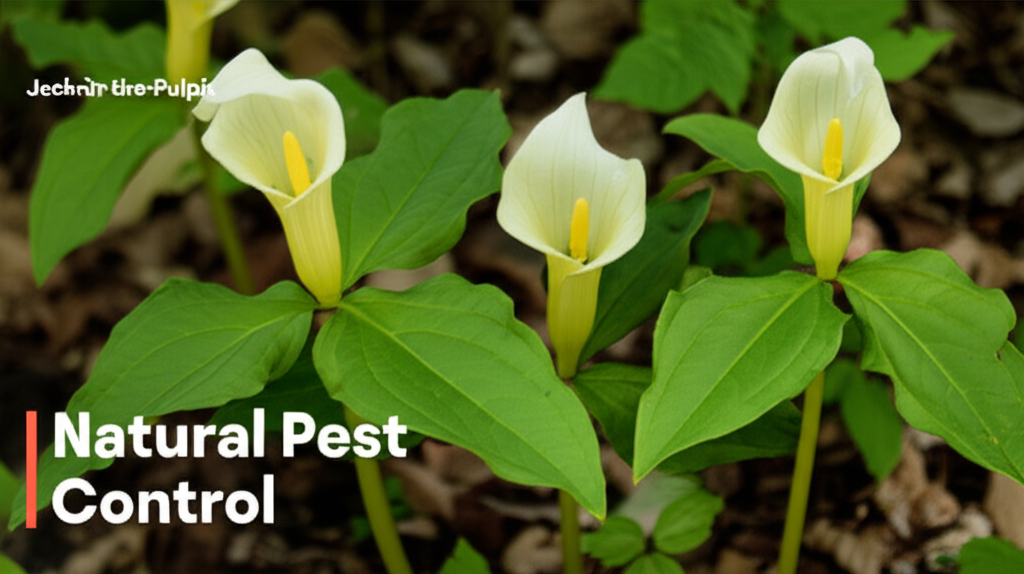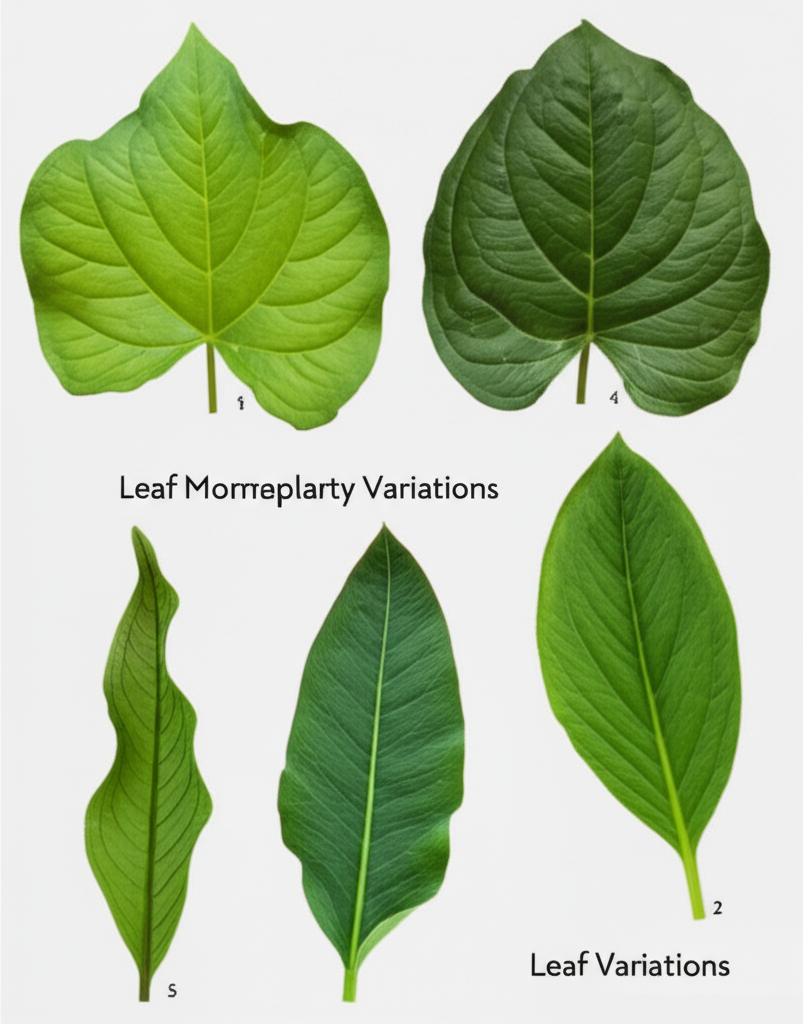The Allure of Foxglove Beardtongue
Foxglove Beardtongue, scientifically known as Penstemon digitalis, is a North American native perennial that has captivated gardeners and ecologists alike. Its tall, elegant spikes of tubular, white to pale pink flowers are a magnet for a wide array of pollinators, making it a cornerstone plant for any wildlife-friendly garden. Beyond its aesthetic appeal and ecological benefits, Penstemon digitalis is remarkably adaptable, thriving in a variety of soil types and light conditions, from full sun to partial shade. Its drought tolerance once established further adds to its appeal for low-maintenance landscapes.
However, to truly maximize the ecological impact and visual appeal of Foxglove Beardtongue, understanding its ideal companion plants is crucial. Companion planting is not just about aesthetics; it’s about creating a thriving ecosystem within your garden, supporting beneficial insects, deterring pests, and enhancing overall plant health. By strategically selecting plants that share similar growing needs and offer complementary benefits, you can cultivate a vibrant, resilient garden that buzzes with life.
Understanding the Needs of Foxglove Beardtongue
Before delving into companion planting, it’s essential to grasp the specific requirements of Penstemon digitalis. This allows for informed decisions about which plants will not only survive but flourish alongside it, creating a harmonious and mutually beneficial planting scheme.
Sunlight and Soil Preferences
Foxglove Beardtongue generally prefers full sun to partial shade. In hotter climates, some afternoon shade can be beneficial, preventing the flowers from scorching and prolonging their bloom. Regarding soil, it is surprisingly adaptable, tolerating a range of conditions from moist, well-drained soils to drier, sandier loams. It’s important to avoid waterlogged conditions, as this can lead to root rot. Its native habitat often includes prairies and open woodlands, indicating a preference for good air circulation and soils that drain well.
Bloom Time and Duration
The bloom period for Penstemon digitalis typically spans from late spring through early summer, usually peaking in June and July. The individual flowers, though small, are produced in abundance on long, erect stems, creating a striking visual display. This extended bloom period is a significant draw for pollinators, providing a reliable food source during a critical time of year.
The Benefits of Strategic Companion Planting
Companion planting offers a multitude of advantages for both the gardener and the garden’s ecosystem. When selecting partners for Foxglove Beardtongue, we aim to enhance its strengths and mitigate any potential weaknesses.
Attracting a Diverse Pollinator Guild
The primary goal of planting Foxglove Beardtongue is often to attract pollinators. Companion plants can further enhance this by offering different nectar and pollen sources, or by attracting pollinators that may not be as drawn to Penstemon digitalis. A diverse plant palette ensures a consistent food supply for a wider range of beneficial insects, from bees and butterflies tohoverflies and moths.
Natural Pest Deterrence
Certain companion plants possess natural properties that can deter common garden pests. This can reduce the need for chemical interventions, promoting a healthier and more sustainable garden. Aromatic herbs, for example, can confuse and repel insects that might otherwise target Penstemon digitalis or its companions.
Improving Soil Health
Some plants, particularly legumes, can fix atmospheric nitrogen into the soil, enriching it and providing essential nutrients for neighboring plants. Others, with deep taproots, can help break up compacted soil, improving drainage and aeration.
Enhancing Visual Appeal
Beyond the functional benefits, companion planting is an art form. Strategically chosen partners can complement the form, texture, and color of Foxglove Beardtongue, creating a more dynamic and visually engaging garden display throughout the seasons.
Key Facts and Comparison: Foxglove Beardtongue and its Companions
To guide your selections, let’s examine some excellent companion plants for Foxglove Beardtongue, categorized by their primary benefits.
| Plant Name (Scientific) | Native Region | Sunlight Needs | Soil Preferences | Bloom Time | Height (approx.) | Primary Pollinator Appeal | Additional Benefits |
|---|---|---|---|---|---|---|---|
| Foxglove Beardtongue Penstemon digitalis |
Eastern North America | Full Sun to Part Shade | Well-drained, adaptable (loam, sandy) | Late Spring – Early Summer | 2-4 ft | Bees (native bees, bumblebees), Butterflies, Hummingbirds | Drought tolerant, long bloom |
| Wild Bergamot Monarda fistulosa |
North America | Full Sun | Well-drained | Summer – Early Fall | 2-4 ft | Bees (especially bumblebees), Butterflies, Skippers, Hummingbirds | Drought tolerant, aromatic foliage, attracts beneficial insects |
| Milkweed (Common) Asclepias syriaca |
Eastern & Central North America | Full Sun | Well-drained | Mid-Summer | 3-5 ft | Butterflies (Monarchs!), Bees, Skippers, Moths | Host plant for Monarch caterpillars, provides nectar |
| Coneflower (Purple) Echinacea purpurea |
Eastern & Central North America | Full Sun | Well-drained | Summer – Fall | 2-4 ft | Bees, Butterflies, Goldfinches (for seed) | Drought tolerant, medicinal properties, long bloom |
| Blazing Star (Prairie) Liatris pycnostachya |
North America | Full Sun | Well-drained, moist to dry | Mid-Summer – Early Fall | 2-5 ft | Butterflies, Skippers, Bees | Striking vertical accent, drought tolerant |
| Anise Hyssop Agastache foeniculum |
North America | Full Sun | Well-drained | Summer – Early Fall | 2-4 ft | Bees (especially honeybees, bumblebees), Butterflies | Aromatic foliage, edible flowers and leaves, attracts beneficial insects |
| Bee Balm (Scarlet) Monarda didyma |
Eastern North America | Full Sun to Part Shade | Moist, well-drained | Summer | 2-3 ft | Hummingbirds, Bees, Butterflies | Vibrant color, attracts hummingbirds |
| Goldenrod (Showy) Solidago speciosa |
North America | Full Sun | Well-drained, average to dry | Late Summer – Fall | 2-4 ft | Bees, Butterflies, late-season pollinators | Crucial late-season nectar source, drought tolerant |
Top Pollinator-Friendly Companion Plants for Foxglove Beardtongue
Selecting the right partners for your Foxglove Beardtongue can transform your garden into a vibrant sanctuary for pollinators. Here are some of the most effective and beautiful choices.
1. Wild Bergamot (Monarda fistulosa)
Wild Bergamot, also known as Bee Balm or Oswego Tea, is a fantastic companion for Foxglove Beardtongue. Its lavender-pink, shaggy flowers bloom from mid-summer to fall, providing a continuous food source for pollinators when the Penstemon blooms start to fade.
- Pollinator Magnet: It is a favorite of bumblebees, mason bees, leafcutter bees, and various butterfly species.
- Growing Conditions: Thrives in full sun and well-drained soil, mirroring Penstemon digitalis‘s preferences.
- Aesthetic Harmony: Its airy, mounding habit and soft color complement the upright spikes of Foxglove Beardtongue.
- Drought Tolerance: Once established, it is quite drought tolerant.
- Pest Deterrent: The aromatic foliage can help deter some pests.
2. Milkweed (Asclepias spp.)
Milkweeds are indispensable for butterfly gardens, most notably as the sole host plant for Monarch butterfly caterpillars. Several species of Milkweed make excellent companions.
- Common Milkweed (Asclepias syriaca): While it can spread aggressively, its large clusters of fragrant, pinkish-purple flowers are incredibly attractive to a wide range of pollinators, including Monarchs. It prefers full sun and well-drained soil.
- Butterfly Weed (Asclepias tuberosa): This vibrant orange-flowered Milkweed is more clumping in habit and thrives in hot, dry conditions with excellent drainage. It’s a beacon for Monarchs and other butterflies.
- Swamp Milkweed (Asclepias incarnata): If your soil tends to be a bit moister, Swamp Milkweed is a great choice. Its pink flowers are also a favorite of Monarchs and numerous other pollinators.
- Ecological Importance: Essential for Monarch reproduction.
3. Coneflower (Echinacea purpurea)
Purple Coneflower is a classic prairie plant that pairs beautifully with Foxglove Beardtongue. Its sturdy stems topped with daisy-like flowers in shades of pink and purple provide nectar and pollen throughout the summer.
- Pollinator Preference: Highly attractive to bees, butterflies, and beneficial wasps. After blooming, the seed heads provide food for finches.
- Hardiness: Tolerates full sun and a variety of soils, as long as they are well-drained. It is drought tolerant.
- Visual Appeal: Its robust form and long bloom time add significant visual interest. The structure of the flower head is also a unique draw for certain insects.
4. Blazing Star (Liatris spp.)
Blazing Stars, particularly Prairie Blazing Star (Liatris pycnostachya), offer a striking vertical accent with their fuzzy spikes of purple flowers. They bloom in mid-summer, bridging the gap between early and late-season bloomers.
- Pollinator Draw: Attracts a wide variety of butterflies and bees with its plentiful nectar.
- Adaptability: Prefers full sun and can handle a range of soil conditions, from moist to dry, as long as drainage is good.
- Architectural Interest: Their unique flower spike form provides a different textural element compared to the more diffuse blooms of Penstemon.
5. Anise Hyssop (Agastache foeniculum)
With its fragrant anise-scented leaves and spikes of lavender-blue flowers, Anise Hyssop is a pollinator’s dream, especially for bees. It blooms from summer into fall.
- Bee Favorite: Extremely attractive to honeybees, bumblebees, and native bees. Butterflies also visit.
- Growing Needs: Prefers full sun and well-drained soil. It is relatively drought tolerant.
- Sensory Appeal: The aromatic foliage adds another dimension to the garden, and both leaves and flowers are edible.
6. Goldenrod (Solidago spp.)
Often unfairly maligned as a cause of hay fever (ragweed is the culprit!), Goldenrods are vital late-season nectar sources for pollinators as they prepare for winter or migration.
- Late-Season Support: Showy Goldenrod (Solidago speciosa) and other native species bloom in late summer and fall, providing crucial sustenance.
- Pollinator Richness: Supports a multitude of bees, flies, wasps, and butterflies.
- Resilience: Generally drought tolerant and adaptable to various well-drained soils. Its bright yellow plumes create a cheerful late-season display.
7. Asters (Symphyotrichum spp.)
Native Asters are another excellent choice for extending the pollinator season into fall. Their daisy-like flowers in shades of purple, blue, pink, and white are a crucial food source for migrating butterflies and overwintering insects.
- Fall Bloomers: New England Aster (Symphyotrichum novae-angliae) and Smooth Blue Aster (Symphyotrichum laeve) are particularly good choices.
- Pollinator Support: Attracts bees, butterflies, and other late-season pollinators.
- Soil Tolerance: Many asters are adaptable, but most prefer full sun and well-drained soil.
Creating a Balanced Ecosystem: Design and Planting Strategies
Beyond individual plant selections, consider how these companions will work together and with the Foxglove Beardtongue to create a cohesive and functional garden.
Layering for Visual and Ecological Diversity
A well-designed garden utilizes different plant heights, forms, and textures.
- Groundcovers: Consider low-growing native sedges or creeping thyme to fill in spaces around the base of taller plants, suppressing weeds and providing habitat.
- Mid-Story Plants: Foxglove Beardtongue, Coneflowers, and Wild Bergamot will form the mid-story, providing the main floral display.
- Vertical Accents: Blazing Stars add vertical interest and draw the eye upwards.
Consider Bloom Times for Continuous Nectar Flow
The goal is to have something in bloom for as much of the growing season as possible.
- Spring: While Foxglove Beardtongue starts in late spring, earlier blooming natives can provide a foundation.
- Early Summer: Penstemon digitalis takes center stage.
- Mid-Summer: Wild Bergamot, Coneflower, and Blazing Star take over.
- Late Summer/Fall: Goldenrods and Asters ensure pollinators have food well into autumn.
Spacing and Arrangement
- Plant in Drifts: Massing plants of the same species together in drifts (3-5 plants minimum) is more visually impactful and easier for pollinators to locate.
- Avoid Overcrowding: Ensure adequate space for plants to reach their mature size and for good air circulation, which helps prevent fungal diseases. Allow at least 18-24 inches between plants like Penstemon digitalis and its neighbors.
Maintenance and Long-Term Care
Once your pollinator garden is established, regular, but minimal, maintenance will ensure its continued health and beauty.
Watering
Newly planted companions will require regular watering until established. Once established, most of the recommended native plants are drought tolerant and will benefit from reduced watering, particularly if they are in a well-drained location.
Deadheading and Seed Heads
- Deadheading Penstemon digitalis can sometimes encourage a second, lighter bloom.
- However, for many pollinator plants like Coneflower and Goldenrod, leaving the seed heads provides valuable winter food for birds and overwintering sites for beneficial insects. It also adds winter interest to the garden.
Division and Pruning
- Some perennials, like Wild Bergamot, may benefit from division every few years to maintain vigor and control their spread.
- Pruning back spent flower stalks in late fall or early spring can be done, but as noted, leaving them can offer ecological benefits.
Pest and Disease Management
A diverse planting of native plants is generally more resilient to pests and diseases. Healthy plants in the right conditions are less susceptible. Encourage natural predators by providing habitat and a diverse food source. If issues arise, identify the problem before resorting to any treatments, opting for organic or least-toxic solutions whenever possible.
Troubleshooting Common Companion Planting Issues
Even with careful planning, challenges can arise. Understanding common issues can help you address them effectively.
Aggressive Spreaders
Some native plants, like Common Milkweed, can spread vigorously via rhizomes. Planting them in areas where their spread can be contained or periodically managed is key. Alternatively, choose less aggressive species or cultivars if containment is a concern.
Competition for Resources
Ensure plants are spaced appropriately to avoid excessive competition for sunlight, water, and nutrients. If plants appear leggy or stunted, they might be overcrowded or not receiving enough light.
Mismatched Needs
While we’ve focused on plants with similar needs, always double-check specific requirements. For instance, placing a bog-loving plant next to a drought-tolerant one in a sunny, dry spot is a recipe for failure. The companions listed here generally share a preference for full sun and well-drained soil, making them good matches for Penstemon digitalis.
Conclusion: Cultivating a Thriving Pollinator Haven
Foxglove Beardtongue is a remarkable plant for any garden aiming to support native wildlife. By thoughtfully selecting companion plants that share its ecological niche and aesthetic qualities, you can create a vibrant, resilient landscape that hums with the activity of bees, butterflies, and other beneficial insects. From the airy spikes of Penstemon digitalis to the bold blooms of Coneflower and the vital support of Milkweed, each plant plays a crucial role in fostering a healthy ecosystem. Embracing the principles of native plant gardening and companion planting will not only beautify your garden but also contribute significantly to the preservation of our precious pollinators.
Steps to Planting Your Pollinator Garden
Here’s a straightforward guide to getting started:
| Step | Description |
|---|---|
| 1. Site Selection | Choose a location that receives at least 6-8 hours of direct sunlight per day. Assess soil drainage. |
| 2. Soil Preparation | Amend the soil with compost if necessary, ensuring good drainage. Avoid excessive fertilization, as many native plants prefer lean soils. |
| 3. Plant Selection | Choose Foxglove Beardtongue and its chosen companions, considering bloom times, heights, and visual appeal. Prioritize native species. |
| 4. Arrangement Planning | Sketch out your garden layout, considering plant heights, bloom times, and planting in drifts for visual impact and pollinator ease. |
| 5. Planting | Dig holes twice the width of the root ball. Plant at the same depth as the nursery container. Water thoroughly after planting. |
| 6. Mulching | Apply a 2-3 inch layer of organic mulch (wood chips, shredded bark) around the plants, keeping it a few inches away from the stems. |
| 7. Watering Schedule | Water regularly until plants are established (first 1-2 growing seasons). Reduce watering as plants become drought tolerant. |
| 8. Ongoing Maintenance | Monitor for weeds and pests. Deadhead selectively if desired, but consider leaving seed heads for wildlife and winter interest. |


